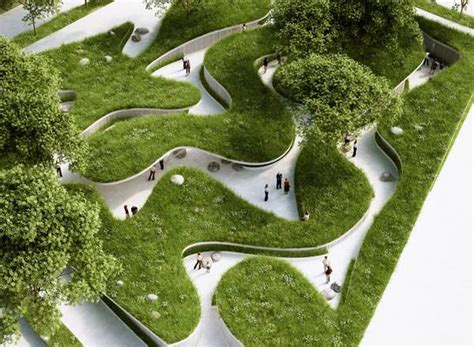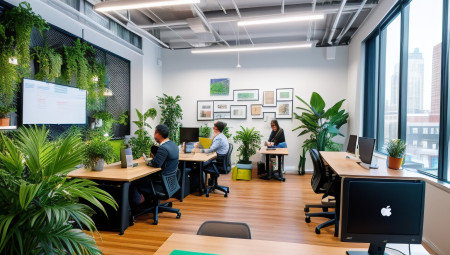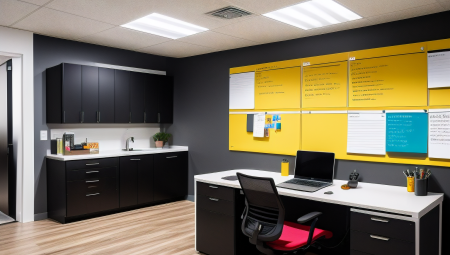Designing Sustainable Landscapes has become a crucial aspect of environmental conservation and urban development. As the world grapples with the challenges of climate change and ecological degradation, the role of Landscape Architects has gained significant relevance. In this blog post, we will delve into the intricacies of sustainable landscape design and the pivotal role of a Landscape Architect in creating eco-friendly and resilient outdoor spaces. From understanding the fundamental principles of sustainable design to evaluating site conditions, managing stormwater runoff, and integrating native plants and biodiversity, we will explore the various aspects of sustainable landscape architecture. Additionally, we will shed light on the importance of water conservation strategies, sustainable materials and construction, energy efficiency, and creating functional and accessible outdoor spaces. Join us on this informative journey as we unravel the art and science of designing sustainable landscapes, and the critical importance of long-term maintenance in preserving our natural environment.
Table of Contents
Understanding the Role of a Landscape Architect
When it comes to designing outdoor spaces that are both functional and aesthetically pleasing, a landscape architect plays a crucial role. These professionals are responsible for creating plans and designs for outdoor areas such as parks, gardens, residential properties, and commercial developments. They need to have a deep understanding of the natural environment and a strong eye for design in order to create sustainable and visually appealing landscapes.
One of the key responsibilities of a landscape architect is to work with clients to understand their needs and desires for the outdoor space. This involves conducting site visits, gathering information about the site conditions, and assessing any potential challenges or limitations. By understanding the client’s vision and the unique qualities of the site, the landscape architect can create a design that is both functional and beautiful.
In addition to working with clients, landscape architects also collaborate with other professionals such as architects, engineers, and environmental scientists to ensure that their designs are both structurally sound and environmentally sustainable. This collaboration often involves integrating sustainable design principles, such as using native plants and biodiversity to promote ecological health, implementing water conservation strategies, and managing stormwater runoff.
Overall, the role of a landscape architect is multifaceted and requires a diverse set of skills and knowledge. From site assessment and client communication to sustainable design and collaboration with other professionals, landscape architects play a vital role in creating outdoor spaces that are both beautiful and environmentally conscious.
Exploring Sustainable Design Principles
When it comes to sustainable design principles, it is essential to understand the importance of creating environmentally friendly and ecologically responsible landscapes. This involves incorporating practices that minimize the negative impact on the environment while also enhancing the well-being of people and communities.
One key principle of sustainable design is reducing energy consumption. This can be achieved through the use of energy-efficient lighting, implementing passive solar strategies, and utilizing materials that have a low environmental impact. By minimizing energy use, landscapes can contribute to a healthier planet and reduce the dependence on non-renewable resources.
Another important aspect of sustainable design principles is the use of recycled and locally sourced materials. By utilizing materials that have been repurposed or sourced from nearby regions, the carbon footprint of the landscape can be significantly reduced. This not only reduces the impact on the environment but also supports local economies and reduces transportation-related emissions.
Furthermore, natural stormwater management is a fundamental sustainable design principle. By incorporating rain gardens, bioswales, and permeable paving, landscapes can effectively manage stormwater runoff, prevent erosion, and improve water quality. This not only benefits the environment but also helps to create visually appealing and functional outdoor spaces.
Assessing Site Conditions for Landscape Design
Before embarking on a landscape design project, it is crucial to assess the site conditions thoroughly. Site assessment is a critical first step in creating a successful and sustainable outdoor space. To begin with, it is important to understand the natural features of the site, including topography, soil composition, and drainage patterns. This information will inform the design process and help in determining the best approach for the project.
Furthermore, it is essential to take into account the existing vegetation, including trees, shrubs, and other plants. Understanding the vegetation on the site is key to creating a design that preserves and enhances the natural beauty of the landscape. Additionally, an assessment of the microclimate and sunlight exposure will help in selecting the most appropriate plant species for the site.
Another important aspect of site assessment is considering the environmental factors that may impact the landscape design, such as noise pollution, air quality, and wildlife habitat. Environmental factors play a significant role in determining the success and sustainability of the design, and it is crucial to address these considerations during the assessment process.
Lastly, it is important to take into account any existing infrastructure and utilities on the site, including drainage systems, irrigation, and existing hardscape features. Assessing the site’s infrastructure will help in identifying any constraints or opportunities for the design, ensuring that the final plan is both functional and sustainable.
Integrating Native Plants and Biodiversity
Integrating native plants and promoting biodiversity in landscape design is crucial for creating sustainable and resilient outdoor spaces. By incorporating plants that are indigenous to a specific region, landscape architects can help support local ecosystems and minimize the need for excessive water, fertilizers, and maintenance. In addition, promoting biodiversity through the use of a variety of plant species can enhance the overall health and stability of the landscape.
When integrating native plants into a design, it’s important to consider the specific ecological needs of each species, as well as their potential impact on local wildlife. Selecting a diverse range of plants that offer food and habitat for insects, birds, and other animals can help contribute to a thriving and balanced ecosystem. Additionally, incorporating native plants can help reduce the spread of invasive species and support the preservation of local flora and fauna.
Furthermore, by integrating native plants into landscape design, architects have the opportunity to create visually captivating and culturally significant outdoor spaces. Native plants can offer a sense of connection to the natural environment and can be utilized to reflect the unique character and history of a particular area. Incorporating these plants can also contribute to the overall resilience of the landscape by reducing the need for intensive maintenance and enhancing its ability to withstand environmental stressors.
In conclusion, integrating native plants and biodiversity into landscape design is a fundamental component of creating sustainable and ecologically responsible outdoor spaces. By carefully selecting and incorporating indigenous plant species, landscape architects can support local ecosystems, promote biodiversity, and develop resilient landscapes that are both visually captivating and environmentally conscious.
Implementing Water Conservation Strategies
When it comes to water conservation strategies in landscape design, it is important to consider the various methods and techniques that can be employed to minimize water usage while still maintaining healthy and thriving outdoor spaces. One of the key approaches to water conservation is the use of drought-resistant plants that require minimal irrigation and can withstand dry conditions. By incorporating native plants and other water-efficient species into the landscape design, it is possible to significantly reduce the amount of water needed for maintenance.
Another important aspect of implementing water conservation strategies is the use of efficient irrigation systems. This includes the installation of drip irrigation, smart controllers, and rain sensors, which can help optimize water usage based on the specific needs of the plants and soil conditions. Additionally, collecting and reusing rainwater through the use of rain barrels and green roofs can further contribute to reducing the reliance on traditional water sources.
Furthermore, the design of permeable paving and rain gardens can help manage stormwater runoff and minimize water waste. These features allow rainwater to infiltrate into the ground, replenishing groundwater and reducing the burden on municipal water systems. Additionally, the use of mulch and soil amendments can help retain moisture and improve the overall water retention capacity of the soil, leading to reduced water consumption.
Overall, by incorporating these water conservation strategies into landscape design, it is possible to create beautiful and sustainable outdoor spaces while minimizing the impact on water resources and promoting environmental stewardship.
Managing Stormwater Runoff in Landscape Design
Managing stormwater runoff in landscape design is crucial for maintaining the health and integrity of the surrounding environment. Stormwater runoff occurs when rainwater flows over the ground rather than seeping into the soil. This can lead to a buildup of pollutants, erosion, and flooding if not properly managed. Landscape architects play a vital role in implementing strategies to mitigate the negative effects of stormwater runoff.
One effective way to manage stormwater runoff is by incorporating permeable paving materials into the design. These materials allow rainwater to infiltrate the ground, reducing the amount of runoff and pollutants that enter nearby water bodies. Additionally, rain gardens and bioretention areas can be strategically placed throughout the landscape to capture and filter stormwater before it reaches natural water sources.
Another important consideration for managing stormwater runoff is grading and erosion control. Properly grading the land can help direct stormwater to designated collection areas, preventing erosion and sedimentation. Implementing erosion control measures, such as grassed swales and retaining walls, can further minimize the impact of runoff on the landscape.
As our understanding of stormwater management continues to evolve, landscape architects are increasingly utilizing green infrastructure techniques to address runoff issues. This may include the use of vegetated rooftops, rainwater harvesting systems, and constructed wetlands to manage and treat stormwater in a sustainable manner.
Promoting Sustainable Materials and Construction
In today’s world, the need for sustainable materials and construction has never been more important. As we strive to minimize our impact on the environment, it is crucial that we consider the materials we use and the construction practices we employ. By promoting sustainable materials and construction, we can reduce carbon emissions, minimize waste, and create healthier living spaces for both humans and wildlife.
One of the key ways to promote sustainable materials and construction is to choose materials that are environmentally friendly and have a minimal impact on the planet. This can include using recycled materials, responsibly sourced wood, and low-impact production processes. By doing so, we can ensure that the materials we use in construction are not contributing to deforestation, pollution, or habitat destruction.
In addition to using sustainable materials, it is also important to consider the construction process itself. This means employing practices that minimize waste, reduce energy consumption, and maximize efficiency. By using innovative construction techniques and technologies, we can ensure that the built environment is as sustainable as possible.
Ultimately, promoting sustainable materials and construction is not just about creating environmentally friendly buildings and landscapes. It is about creating a better world for future generations, where our impact on the planet is minimized, and the natural world is preserved for all to enjoy.
Designing for Energy Efficiency and Renewable Energy
When it comes to designing for energy efficiency and renewable energy, landscape architects play a crucial role in creating sustainable outdoor spaces that minimize energy consumption and promote the use of renewable resources. By integrating innovative and eco-friendly design principles, landscape architects can contribute to a more sustainable built environment while enhancing the quality of outdoor spaces.
One key aspect of designing for energy efficiency and renewable energy is the use of passive design strategies to minimize the need for artificial heating and cooling. This can include the strategic placement of trees and vegetation to provide shade and reduce the heat island effect, as well as the use of natural materials and reflective surfaces to optimize energy performance.
In addition to passive design strategies, landscape architects can also incorporate renewable energy technologies such as solar panels, wind turbines, and geothermal systems into their designs. These technologies can help to reduce the reliance on non-renewable energy sources and lower the overall carbon footprint of outdoor spaces.
By prioritizing energy efficiency and renewable energy in landscape design, landscape architects can contribute to a more sustainable and resilient built environment, while creating outdoor spaces that benefit the health and well-being of communities.
Creating Functional and Accessible Outdoor Spaces
When designing outdoor spaces, it is crucial to prioritize functionality and accessibility to ensure that they are usable for all individuals. Incorporating elements such as smooth pathways, ramps, and designated seating areas can enhance the accessibility of outdoor spaces for individuals with mobility impairments. Additionally, thoughtful placement of amenities such as picnic tables, benches, and recreational facilities can contribute to the functionality of the space, making it more enjoyable and user-friendly for everyone.
Furthermore, considering the diverse needs of potential users is essential when creating outdoor spaces. This includes accommodating individuals of all ages, abilities, and cultural backgrounds. By incorporating universal design principles, such as providing multiple access points and creating multi-sensory experiences, outdoor spaces can become more inclusive and welcoming to a wider range of users.
Integrating universal design features into outdoor spaces not only benefits individuals with disabilities but also enhances the overall experience for all users. For example, providing ample seating options, shaded areas, and accessible facilities can make outdoor spaces more accommodating and enjoyable for families, older adults, and individuals with temporary injuries or limitations.
In conclusion, prioritizing functionality and accessibility when creating outdoor spaces is essential for promoting inclusivity and ensuring that the space can be comfortably and safely utilized by a diverse range of individuals. By integrating universal design principles and thoughtful considerations for the needs of all potential users, outdoor spaces can become more welcoming, enjoyable, and usable for everyone.
Evaluating the Long-Term Maintenance of Sustainable Landscapes
When evaluating the long-term maintenance of sustainable landscapes, it is crucial to consider the ongoing care and upkeep required to ensure the continued health and vitality of the environment. This includes the regular monitoring of plant and soil conditions, the maintenance of irrigation systems, and the management of any pests or diseases that may affect the landscape.
Additionally, the long-term maintenance of sustainable landscapes also involves assessing the effectiveness of any water conservation strategies that have been implemented, as well as the use of sustainable materials and construction techniques to minimize the need for repairs and replacements in the future.
Evaluating the long-term maintenance of sustainable landscapes also requires careful consideration of the energy efficiency and renewable energy sources that are incorporated into the design, as well as the accessibility and functionality of outdoor spaces for all users.
In conclusion, the evaluation of the long-term maintenance of sustainable landscapes is a critical component of ensuring the continued success and impact of environmentally friendly design principles. By carefully assessing and managing the ongoing care and maintenance of these landscapes, we can work towards creating a more sustainable and resilient environment for future generations.





